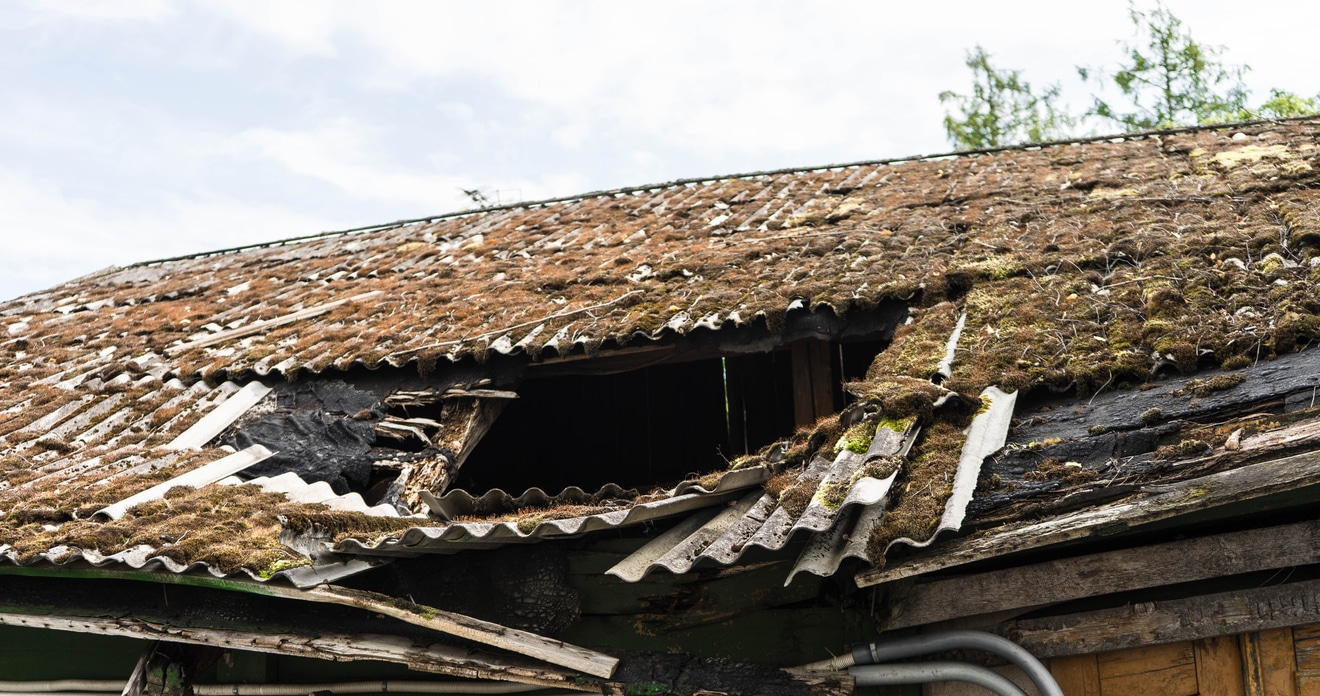Asbestos and bad weather – do we need to do more?

With extreme weather come a number of dangers which often lead to health and safety concerns for those affected. The effects of wildfire smoke on air quality in Australia, for example, are being closely monitored and documented.
But, what about other dangers that may not appreciated, in particular, that of asbestos?
The UK, Australia and many other countries around the world have a legacy of asbestos use and asbestos remains present in so many buildings to this day. So, what happens when these buildings and destroyed and damaged by freak weather?
Asbestos which is sealed and contained within materials is generally considered not to be harmful to health as fibres and dust is held within the material and do not become airborne. However, as materials age and become damaged, fibres can be released. It is not unusual for strong winds in the UK to cause damage to roofs of garages and sheds for example. If asbestos containing materials were used in the construction for example, corrugated asbestos cement roof sheets or tiles and they become damaged, then asbestos may be released in to the air.
Evidence suggests that more extreme weather is likely to increase as global temperatures continue to rise. So many countries have used asbestos in the past, and there are still some countries using the deadly material today. Such weather will continue to cause damage and destruction of asbestos containing building materials which have been left in situ. In turn this will lead to asbestos dust and fibres becoming airborne and may potentially put people at risk of developing mesothelioma, a form of incurable cancer which can develop after low levels of exposure. Further, if damaged asbestos building materials are cleaned up and disposed of by homeowners, who do not realise they contain asbestos, then they will be putting themselves at risk.
My colleague Rachel James recently wrote about (Airborne edition 9) the Australian town of Wittenoom which was so contaminated by asbestos it was considered unsafe for human habitation and was closed down. If fires were to take hold, asbestos fibres could spread for miles across Australia, contaminating the air in other towns and cities to an extent much higher than normal background level.
Currently, strategies regarding the management of asbestos tend to focus around asbestos materials which are in good condition being left in situ and managed and monitored with regular inspection rather than removal. However, extreme and unpredictable weather is just one way in which asbestos materials may become damaged unexpectedly or degrade more quickly that would be otherwise expected. Therefore, do such strategies need to be reconsidered? In the UK, do we need a plan for the phased removal of asbestos containing materials from all buildings? If asbestos is not dealt with I have no doubt that it will sadly continue to destroy the lives of innocent people all around the world for decades to come.